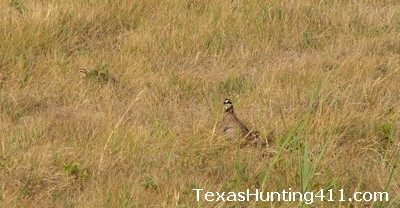Over the past 25 years, wildlife management has gone hand in hand with hunting in Texas. Landowners have put their time, energy and money where their mouth is when it’s come to the management of the Lone Star State’s natural resources. It’s been a great thing to watch. It’s also nice to see deserving landowners be rewarded for the hard work that they have done. Revitalization efforts on two ranches in two different ecological regions of Texas have earned a Houston couple the 2013 Leopold Conservation Award, Texas’s highest honor for private land conservation.
“On Buckhollow Ranch, the wildlife management goals are to manage and improve the ranch for wildlife diversity, and to provide optimum wildlife habitat,” retired Texas Parks and Wildlife Department (TPWD) biologist Richard B. Taylor pointed out in his nomination of Jack and Jan Catos for the Leopold Award. “The emphasis is on improving the native habitat through proper range and wildlife management, and to maintain healthy, native wildlife populations – with an emphasis on nongame, threatened, and endangered species.”

Due to excellent habitat management, endangered species such as the black-capped vireo, golden-cheeked warbler and Tobusch fishhook cactus are increasing on the Buckhollow Ranch. Natural springs are returning to life, and flow volumes have increased since the Catos purchased the ranch. Because of the ample ground cover that has become established through sound management practices, water penetration has improved, run-off slowed, and soil erosion noticeably diminished. The benefits of good are evidenced by the healthy plants and abundant wildlife populations on the property.
Native plant populations have been surveyed on Buckhollow by the Texas Nature Conservancy and monitored by various agencies including TPWD and the U.S. Department of Agriculture’s Natural Resources Conservation Service (NRCS). Texas Snowbell, an endemic native plant, was reintroduced several years ago in an attempt to re-establish it in its historical range.
On the Stockard-Sirianni Ranch, bi-annual helicopter surveys are conducted to assess white-tailed deer, coyotes, feral hog, javelina, turkey and quail populations. Incidental herpetological surveys have also been conducted by the landowners, TPWD, and ranch visitors. Plant surveys targeting native grasses have been conducted by South Texas Natives and TPWD. Similar to those found on the Buckhollow, bird populations are also monitored throughout the year by various bird watching groups and individuals, including the Catos, who are active birders. The Catos have participated in a prescribed burning school and numerous wildlife seminars to better educate themselves on habitat management and environmental issues. Most of their knowledge has been directly applied to the landscape.
The Catos’ Wildlife Management Activities
- Water guzzlers (a mechanical water conservation device) installed throughout Buckhollow Ranch continue to benefit wildlife by improving species distribution and decreasing dependance on natural springs, rivers, and streams.
- In addition, extensive stands of ashe juniper have been removed to increase spring flow, and four solar-powered water wells have either been retrofitted or drilled. Water diversion berms have been created across all hillside roads to prevent soil erosion, promote soil conservation, and one small holding tank has been created to capture seasonal water for wildlife. This has helped reduce negative impacts to sensitive areas.
- As a result of extensive habitat management on Buckhollow Ranch, native grasses such as little bluestem are returning at an increasing rate, slowly replacing the non-native King Ranch bluestem that previous owners planted and allowed to increase. Browsing pressure on woody plants such as live oak has decreased dramatically, allowing ample regeneration.
- At the Stockard-Sirianni Ranch, existing fences have been replaced, and a rotational grazing system instituted. This has benefitted the native habitat, and improved livestock production. In addition, a roughly 20-acre wetland has been established for resident and migratory waterfowl, complete with levees and pipelines to maintain water levels. More than 100 bird nesting boxes have been erected on this property, including bluebird boxes, screech owl boxes, wood duck boxes, purple martin houses, and bat boxes.
- In addition to the work they have done on their land, the Catos have been generous in sharing their properties with others—including local residents, neighbors, conservation groups, universities, and state and federal agencies. They have been actively involved with TPWD, NRCS, the Nature Conservancy, West Texas A&M University, and Southwest Texas Junior College by allowing these agencies or institutions to use the ranch for meetings, field days, research projects, demonstrations, and educational programs.
Perhaps the most dramatic demonstration of the Catos’s long-term commitment to wildlife management and conservation is the recent placing of the Buckhollow Ranch under a perpetual conservation easement with The Nature Conservancy. The sole purpose of an easement of this type is to preserve the natural beauty and habitat of the ranch for future generations. It’s like wildlife management — forever.